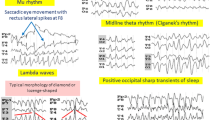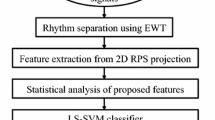Abstract
Measuring complexity from noisy time series provides a crucial insight into the understanding and monitoring of pattern dynamics of complex dynamical systems, including physiological systems such as complex electroencephalogram (EEG) times series observed during anesthesia. We introduce a simple, yet noble complexity measure, called the lumped permutation entropy (LPE) based on the permutation entropy (PE), which allows a tie rank on the pattern formation and shows the robustness under the influence of strong noise, overcoming some limitations of PE and its variants in noisy signals. The robustness of LPE is demonstrated for complex time series from a typical chaotic dynamical system and is applied to empirical electroencephalographic (EEG) data obtained from subjects anesthetized by propofol. In particular, we found that the entropic complexity of EEG time series based on LPE is inversely correlated with plasma concentration of propofol and shows better performance and more robustness than PE and other types of entropic algorithms in indicating the anesthetic depth during the progress of general anesthesia. LPE can be used as complexity measure for real-time monitoring of anesthetic depth during anesthesia.





Similar content being viewed by others
References
C. Bandt, B. Pompe, Phys. Rev. Lett. 88, 174102 (2002)
S.M. Pincus, Proc. Natl. Acad. Sci. USA 88, 2297 (1991)
D.T. Kaplan et al., Biophys. J. 59, 945 (1991)
J. Bruhn, H. Röpcke, A. Hoeft, Anesthesiology 92, 715 (2000)
E. Olofsen, J.W. Sleigh, A. Dahan, Br. J. Anaesth. 101, 810 (2008)
A.A. Bruzzo et al., Neurol. Sci. 29, 3 (2008)
S. Pincus, Econ. Rev. 27, 329 (2008)
L. Zunino et al., Phys. A Stat. Mech. Appl. 388, 2854 (2009)
C. Bian, C. Qin, Q.D.Y. Ma, Q. Shen, Phys. Rev. E 85, 21906 (2012)
B. Fadlallah, B. Chen, A. Keil, J. Príncipe, Phys. Rev. E 87, 22911 (2013)
H. Azami, J. Escudero, Comput. Methods Programs Biomed. 128, 40 (2016)
K. Keller, T. Mangold, I. Stolz, J. Werner, Entropy 19, 134 (2017)
Z. Chen, Y. Li, H. Liang, J. Yu, Complexity (2019). https://doi.org/10.1155/2019/4932030
X.-S. Zhang, R.J. Roy, E.W. Jensen, Trans. Biomed. Eng. 48, 1424 (2001)
Z. Liang et al., Front. Comput. Neurosci. 9, 1 (2015)
H. Lee et al., Hum. Brain Mapp. 38, 4980 (2017)
U. Lee et al., Conscious. Cogn. 18, 1069 (2009)
C. Koch, M. Massimini, M. Boly, G. Tononi, Nat. Rev. Neurosci. 17, 307 (2016)
I.J. Rampil et al., Anesthesiology 69, 298 (1988)
Acknowledgements
Research reported in this publication was supported by the National Research Foundation Grant funded by the Korean Government (NRF-2020R1F1A1076454). The authors thank Dr. Heonsoo Lee at the University of Michigan for valuable discussions.
Author information
Authors and Affiliations
Corresponding author
Additional information
Publisher's Note
Springer Nature remains neutral with regard to jurisdictional claims in published maps and institutional affiliations.
Rights and permissions
About this article
Cite this article
Joo, P., Kim, S., Noh, GJ. et al. A robust complexity measure for noisy EEG time series under dynamic transitions during anesthesia. J. Korean Phys. Soc. 80, 68–73 (2022). https://doi.org/10.1007/s40042-021-00332-7
Received:
Revised:
Accepted:
Published:
Issue Date:
DOI: https://doi.org/10.1007/s40042-021-00332-7




